How to Start a Coffee Shop In 2024
Do you dream of starting a coffee shop that has the perfect location, great coffee, and gorgeous latte art? Maybe you envision a successful café where your customers can relax or work. Or maybe you imagine selling joe on the go in a coffee truck.
Starting a new coffee shop might seem like a gigantic task. But you can bring your dream to life by researching and planning well.
In this post, I will explain how to start a coffee shop. Whether you’re curious about sourcing gourmet coffee or financial planning, read on.
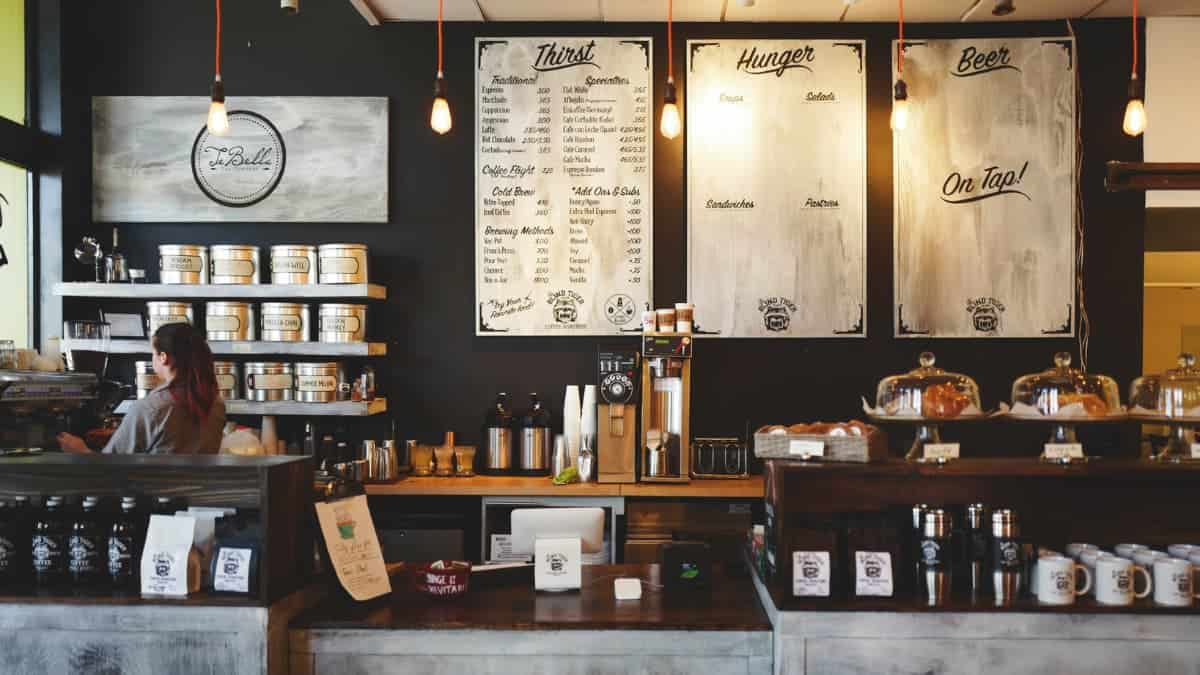
Key Takeaways: Opening a Coffee Shop
- Research your competition and define your market.
- Prepare with good financial planning and a solid business plan.
- Define your vision, business type, and coffee menu.
- Build your team and your customer base.
What Do You Need To Start a Coffee Shop?
When you’re wondering how to start a coffee shop, the tasks can seem endless. Before you get overwhelmed, let’s take a look at the main steps you need to take:
- Design a detailed coffee shop business plan.
- Create a mission statement that defines the type of business you want to create.
- Choose a location, whether it’s a permanent coffee shop, a food truck, or a pop-up spot.
- Buy coffee shop equipment and other necessary items for your coffee shop.
- Hire and train staff.
- Choose an accounting system.
- Secure financing and/or a business loan.
- Design and implement a marketing plan.
How Much Does It Cost To Start a Coffee Shop?
The costs of starting a coffee shop can vary widely. Starting a coffee truck or pop-up can cost as little as $60,000. Opening a high-end coffee shop can cost as much as $300,000 or more.
The bigger the place you want to set up, the higher the costs will be. Want a large shop with seating, a drive-thru, a full kitchen and staff, and elegant décor? Then the start-up costs will be high.
In some cases, you can open a coffee shop inside a larger existing store or restaurant. This piggyback business model might help you keep costs below that of a used car.
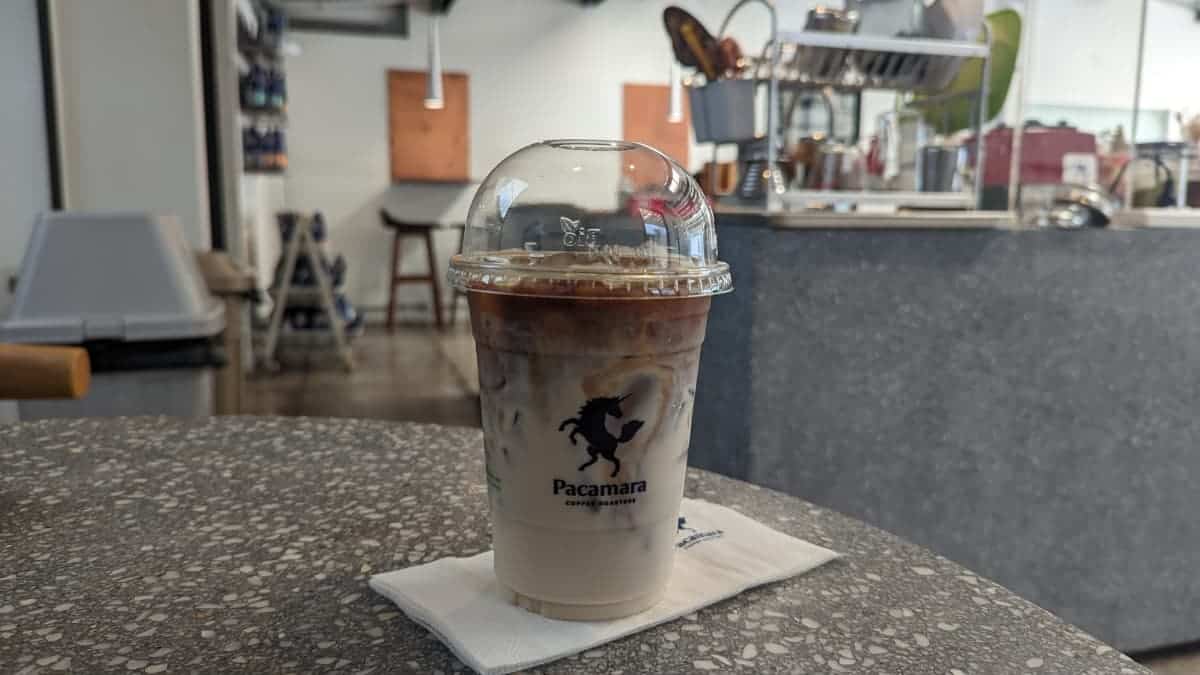
Coffee Shop Startup Costs Summary
Your business plan should incorporate the start-up costs for your new coffee shop. These costs will include both fixed and variable expenses.
Fixed business costs are expenses that stay the same regardless of how much business you do. Fixed costs can include rent, insurance, utilities, administrative costs, and loan repayments.
Variable business costs relate to production expenses. Think inventory, food supplies, employee wages, and shipping.
Here’s a list of some non-negotiable coffee shop costs:
- A shop (or vehicle in the case of a coffee truck)
- Commercial brewing equipment
- Staff wages – baristas, chefs, an executive chef, waiters, cashiers, and more depending on size
- Professional services – designers, accountants, bookkeepers, construction work
- Taxes
- Permits and insurance
- Supplies – inventory of food and drink items such as milk, coffee, and syrup
- Silverware, dishes, cups, napkins, and takeaway items.
20 Steps To Start a Coffee Shop Business
I’m going to spill the beans. Opening a coffee shop isn’t for the faint of heart. The list of tasks you need to do can often feel overwhelming.
Still want to know how to start a coffee shop? Grab an espresso. I’m going to break down these tasks step by step.
1. Research the Coffee Shop Scene
Before you open a coffee shop, you need to know the area where you plan to operate.
Learn what works in your neighborhood. Visit other coffee shops and perhaps speak with the owners.
Find out what your competition offers. Also, look at how much they charge, how they market, and how they position their brand.
Once you’ve looked at individual shops, ask yourself a few questions to survey the local scene:
- What independent coffee shops exist in the area?
- What chain coffee shops operate in the area?
- Do other coffee shops serve food? Or are they focused on coffee?
- What service is missing that you can fill?
- Now is a great time to consider the vision you have for your coffee shop. Who do you want to attract? What kind of experience do you want to provide?
This vision will help guide you along each step. Whether you’re buying equipment, coffee beans, or serving cups — you need a plan.
When I give training sessions for people who want to improve their coffee shop sales, I see a common problem. Many people skip this essential step of learning what’s already in the market before opening a shop.
Some shop owners then end up with equipment or coffee suppliers far from their vision. Doing a bit of research can make all the difference when opening a new coffee shop
2. Decide on Your Target Market

While the term can sound scary, your market simply refers to who will drink your coffee. Just because someone likes coffee doesn’t mean they’ll patronize your coffee shop.
Be specific as you envision your ideal customer.
Your shop might cater to customers with a variety of backgrounds and preferences. But you still want to pinpoint what each type of customer wants from your shop.
Here are a few related questions to ask yourself:
- Will you depend on foot traffic?
- Will your potential customers happen to pass by the shop on the way to work? Or will you offer them an experience worth traveling across town for?
- Will they want only dark roast drip coffee? Or will they expect a wide range of sustainable, light roast pour-overs?
- What advantages will your business have that attract a loyal customer base?
- What makes each segment of your customers different? What interests and tastes do they share?
- What market trends do you plan to focus on?
Knowing your ideal customer will also help you when you work on marketing, which I’ll cover in a bit.
3. Create Your Coffee Shop Business Plan
A business plan is your roadmap to success. A coffee shop business plan will summarize what your business is about and who you will serve. It will also establish who you will hire and how you will execute the marketing strategy.
Perhaps most importantly, the business plan will detail your financial investment. This calculation will help you predict when you can expect to see earnings.
Be specific (and realistic) in the goals you list in your business plan. Do you want to open a coffee shop with simple to-go offers? Or do you want to open up a chain of large coffee shops around the city, region, or country? What does a successful coffee shop look like to you? All of these ideas should go into the business plan.
And be realistic about how the business will end.
I’ve coached cafe owners who had designed their whole business around themselves. When they wanted to sell the business they found themselves in a financial and legal mess. Incorporate in your business plan any growth and even the end of the business.
4. Apply for Licenses and Permits (Where Applicable)

This step will depend on where you open your coffee shop. But most likely, your commercial space will need licenses and permits to operate.
Check with local authorities to see what their requirements are. These may include a business license, permits, and certifications in food handling. Your shop will have to undergo periodic inspections to keep the permits valid.
5. Source Your Coffee Beans
Good coffee will keep your customers coming back. Whether you want gourmet coffee or just some reliable joe, put time into sourcing coffee beans. Plus, if you’re a coffee fanatic, sourcing (and tasting!) beans might be the best part of opening a coffee shop.
What coffee roaster will you buy your coffee beans from? Will you work with local coffee roasters to source your coffee? If no one in your area supplies the type of beans you’re interested in, you may need to look farther afield.
How will your supplier help your business? Do they have the same vision as you about economic and environmental sustainability? Do they provide information about the coffee grower?
When do they require payments? Do they offer credit, and what are the terms?
And of course, you need to source more than just beans. You’ll need suppliers for dairy and non-dairy milk, tea, other drinks, and sweeteners. You will also need cups, plates, and to-go items. If you want to offer pastries and sandwiches, these pose additional sourcing considerations.
6. Raise Funds
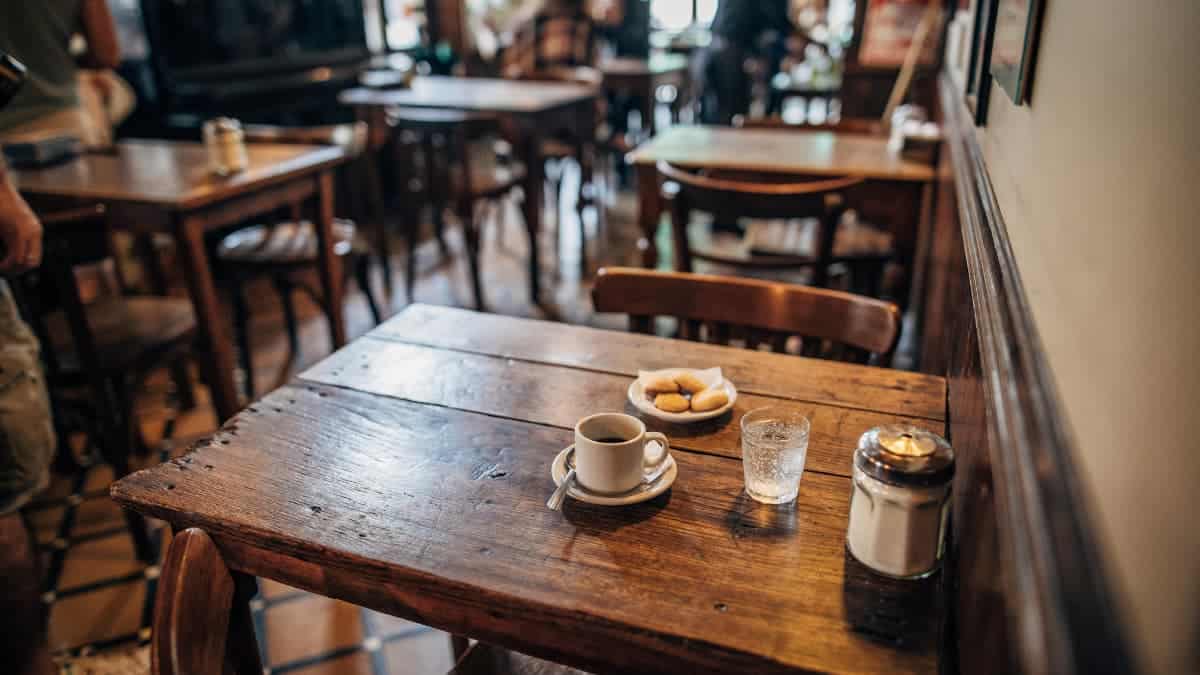
Financing may be the hardest part of opening any new business. You might be overflowing with great ideas and have a vast experience in food and beverage. But it means little if you don’t have the capital to start it or to expand in the future.
To raise funds, you will need to have a plan. This plan should include projected revenue, expenses, and costs related to opening the shop.
You can raise money in various ways. One source of funds is capital that you contribute as an owner. Taking out loans is also an option.
You may also want to look for crowdfunding. Especially if you want to establish a coffee shop in an area that needs a place for community activity.
7. Create Your Coffee Menu
A coffee shop menu is about more than just the coffee beans. What drinks will you offer your customers?
This question goes back to your target audience. What kind of drinks appeal to them? Will they want a full food menu or be happy with a few pastries?
Your initial coffee shop menu might be simple. You could offer a dozen options to give your customers flexibility. But a smaller offering might allow you to ensure all products are fresh and of top quality.
You also want to offer products that you can make with the coffee equipment you have. (There’s no point offering fancy pour-overs if you don’t have the right equipment or skills.)
8. Find Your Shop Location
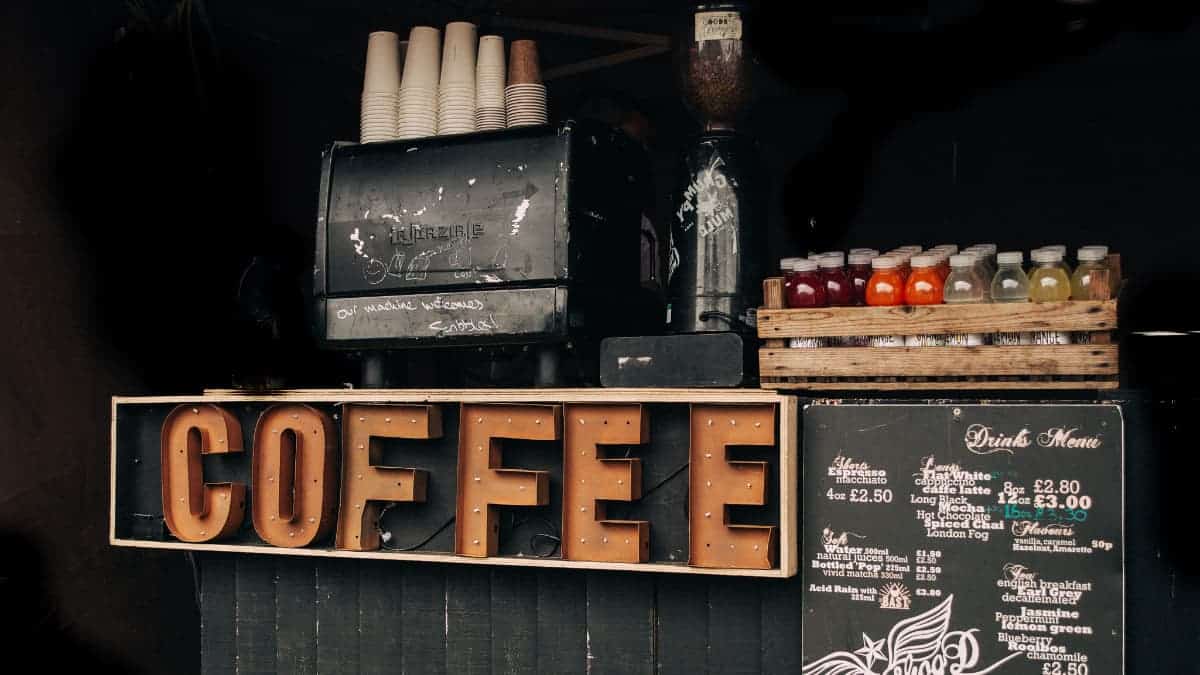
Once you know the area and what kind of customers you’d like to attract, it’s time to consider the shop’s location.
The ideal coffee shop location will depend on physical space needs and financial capacity.
Paying a lease for a commercial space in some areas may be beyond your budget. But you also need to consider how easy your cafe is to get to. Will your regular customers find it easy to arrive and park?
When choosing a location for your shop, remember the competition analysis you did. What other shops, cafes, and restaurants are in the area that would be your direct competition? Will your coffee shop’s concept appeal to people in that neighborhood?
This research takes time, but the perfect location is key to opening a coffee shop.
9. Purchase Your Equipment
The right coffee shop equipment is vital. But coffee equipment can also be an expensive investment when you’re still not quite sure what you need.
Want to know a coffee shop starting hack? When you’re starting out, rent coffee shop equipment. Yep. You can find providers who lease espresso machines, grinders, and coffee makers.
Check with your coffee roaster or supplier. They might offer an agreement that includes coffee shop equipment and training. This strategy could cut the need to make those big purchases when first starting a coffee shop.
Also, consider how much equipment you really need. A simple coffee shop setup might need just a few pieces of equipment. A bigger setup will need tables, chairs, cash registers, refrigerators, dishwashers, and more.
10. Brand
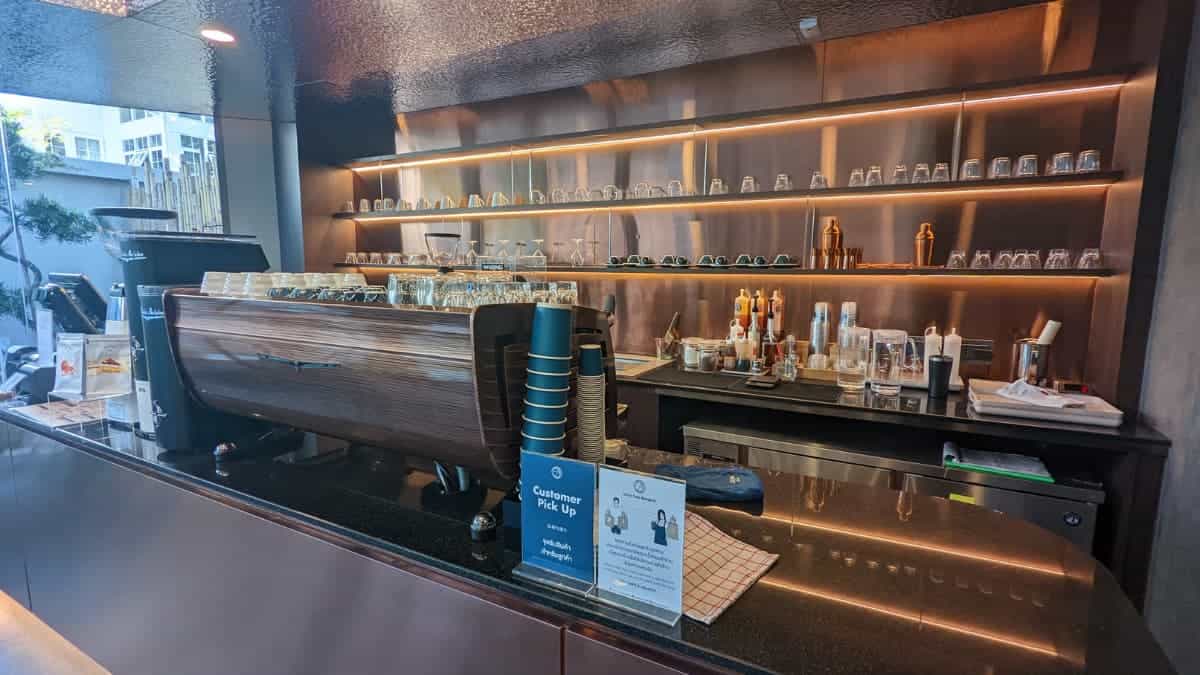
statement that explains the values your coffee shop stands for.
Here are a few guiding questions to get you started:
- What is your mission?
- How do you connect with your customers on an emotional level?
- What expectations do you create in your customers?
Defining this vision serves as the foundation for creating the design of your shop. It’s also essential when deciding on the marketing materials, logo, and colors. And it will come to inform social media and advertising content.
11. Pick Your Point of Sale System
This step has to do with how people will pay you. Depending on your area, you may have different options for a point of sale (POS) system.
A POS system helps you to make each sale and accept payments. It also helps with cost calculation and inventory management.
Choose a POS system that provides flexibility and functionality to scale with the coffee shop’s growth.
12. Use a Software for Bookkeeping
For many legal and economic reasons, you need to pay attention to proper bookkeeping. Bookkeeping software is worth the investment. Especially if you don’t have a background in bookkeeping.
Good software will help you track expenses and revenue. But it will also help you create and review invoices and reports.
You can buy software specifically developed for the coffee shop and restaurant business.
13. Hire an Accountant
While hiring an accountant costs you money, this step also saves you money. An accountant can help you plan for and reach your financial goals.
They can offer you valuable guidance, including advice about insurance and tax write-offs. An experienced accountant can also help you analyze costs and evaluate your spending.
14. Train the Staff
Your team will become your family, the people you see every day. They will be the ones who help your business succeed. You want to be able to work with them and trust them to satisfy the customers.
For most businesses in the food and coffee industry, hiring and training staff is an ongoing task. To increase staff retention, hire people that have a good attitude. Then, give them the tools and training they need to succeed at their job.
15. Create a Loyalty Program
A loyalty program gives people an incentive to come back. Remember: repeat customers are the ones who keep your business afloat.
Loyalty cards are an easy way to incentivize return visits. They give your customers future discounts or free items based on purchases. The more purchases they make, the higher the tiers.
Make sure the program provides value to your customers. A discount that’s too low won’t entice them. Also, make the system convenient to use and simple to understand. Incorporate excitement and anticipation into the program.
16. Begin Marketing
Marketing starts long before you open your coffee shop. You want the neighborhood to eagerly await the opening day. How will you get the buzz started?
Many shops rely on social media to communicate their brand. But it’s also an easy way to showcase what your shop can offer the community. You can also consider hosting events, such as cultural events or barista competitions.
If you focus on social media, consider how you will use accounts like Instagram or Tik Tok videos to promote your message.
Organic marketing is ideal. Think: people who connect with your message, following and promoting your company online. (Word of mouth is also invaluable!) But it can take time to build that kind of marketing.
Paid advertisements can help in the meantime. You can buy ads on social media and review sites like TripAdvisor. Email marketing will also grow your following.
Your marketing program is the voice of your business. Make sure that the marketing person understands your company’s mission and values.
17. Get Feedback From Customers
Once you have customers coming into your coffee shop, you want to get their feedback. Part of that might be simply to ask your staff to be aware of or request customer comments and opinions. You can also use feedback forms, ask your email list, and request reviews on review sites.
Keep an eye on comments your customers post on your social media platform. You may even want to ask for feedback on social media, although do this with caution! Many comments are open to the public to see.
18. Iterate
Now that your shop is up and running, it’s time to evaluate. What’s working? What’s not working?
Sales will tell you what’s working well, but getting feedback from your customers will also clue you in. Make the necessary changes so that you have repeat customers.
Once you find your groove, repeat repeat repeat. When you continue to do the right things in the right way, you’re setting yourself up for the next step.
19. Scale
Now you have a successful cafe. The business operates smoothly. You know what’s working, and you’ve made the necessary improvements. Now you can focus on scaling your business.
Scaling means getting more revenue while controlling costs. Before you buy another property or put rare beans on the menu, ask yourself some questions.
- In what ways would you like to grow?
- Would you like to start serving food or scale your food line?
- Do you want to sell a wider variety of coffee regions?
- Will you need more financing to scale the brand?
Before you scale, make sure you have a successful coffee shop model. You won’t make money or stay in business if you scale a faulty system. You will only be ready to start scaling once your existing business is profitable.
20. Expand
Believe it or not, the time to think about expansion is actually before opening the first coffee shop. You can build the expansion into the main business strategy.
What are some ways you can expand? There are many ways:
- Expand the product line
- Broaden the selection of coffee beans
- Start roasting
- Expand the existing shop by adding a larger seating area
- Open new shops
- Develop online retail sales
Not all coffee shop owners are interested in expansion. And that’s fine! Some coffee shops fail when they try to expand since they lose control over details that matter.
When in doubt, return to the mission statement you created at the beginning of this process.

